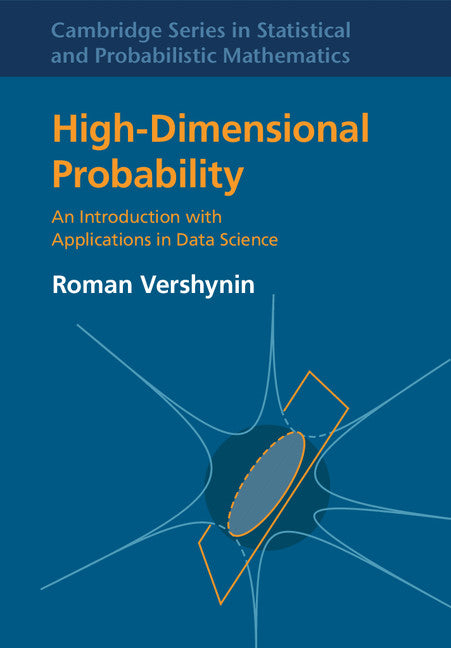Freshly Printed - allow 8 days lead
Couldn't load pickup availability
High-Dimensional Probability
An Introduction with Applications in Data Science
An integrated package of powerful probabilistic tools and key applications in modern mathematical data science.
Roman Vershynin (Author)
9781108415194, Cambridge University Press
Hardback, published 27 September 2018
296 pages
26 x 18.3 x 2.2 cm, 0.71 kg
'A good textbook is as much about learning as about learning something specific. Vershynin's High-Dimensional Probability is a good textbook. When developing a topic, it starts from the simplest idea, it examines its weaknesses and builds up to a better idea; this is superbly done when bounding the tail probabilities of binomial distributions in Chapter 2. It always prioritises high-level narrative to technical details; the reader never loses sight of the main theme, arguments are kept to their essence, side results are given as exercises and important special cases are given priority over the most general statements. Intuition is at least as important as the techniques; this is usually the hardest to communicate in a book, compared for example to a classroom presentation, but it comes across beautifully in this book …' Omiros Papaspiliopoulos, Newsletter of the Bachelier Finance Society
High-dimensional probability offers insight into the behavior of random vectors, random matrices, random subspaces, and objects used to quantify uncertainty in high dimensions. Drawing on ideas from probability, analysis, and geometry, it lends itself to applications in mathematics, statistics, theoretical computer science, signal processing, optimization, and more. It is the first to integrate theory, key tools, and modern applications of high-dimensional probability. Concentration inequalities form the core, and it covers both classical results such as Hoeffding's and Chernoff's inequalities and modern developments such as the matrix Bernstein's inequality. It then introduces the powerful methods based on stochastic processes, including such tools as Slepian's, Sudakov's, and Dudley's inequalities, as well as generic chaining and bounds based on VC dimension. A broad range of illustrations is embedded throughout, including classical and modern results for covariance estimation, clustering, networks, semidefinite programming, coding, dimension reduction, matrix completion, machine learning, compressed sensing, and sparse regression.
Preface
Appetizer: using probability to cover a geometric set
1. Preliminaries on random variables
2. Concentration of sums of independent random variables
3. Random vectors in high dimensions
4. Random matrices
5. Concentration without independence
6. Quadratic forms, symmetrization and contraction
7. Random processes
8. Chaining
9. Deviations of random matrices and geometric consequences
10. Sparse recovery
11. Dvoretzky-Milman's theorem
Bibliography
Index.
Subject Areas: Signal processing [UYS], Pattern recognition [UYQP], Probability & statistics [PBT], Econometrics [KCH], Data analysis: general [GPH]


